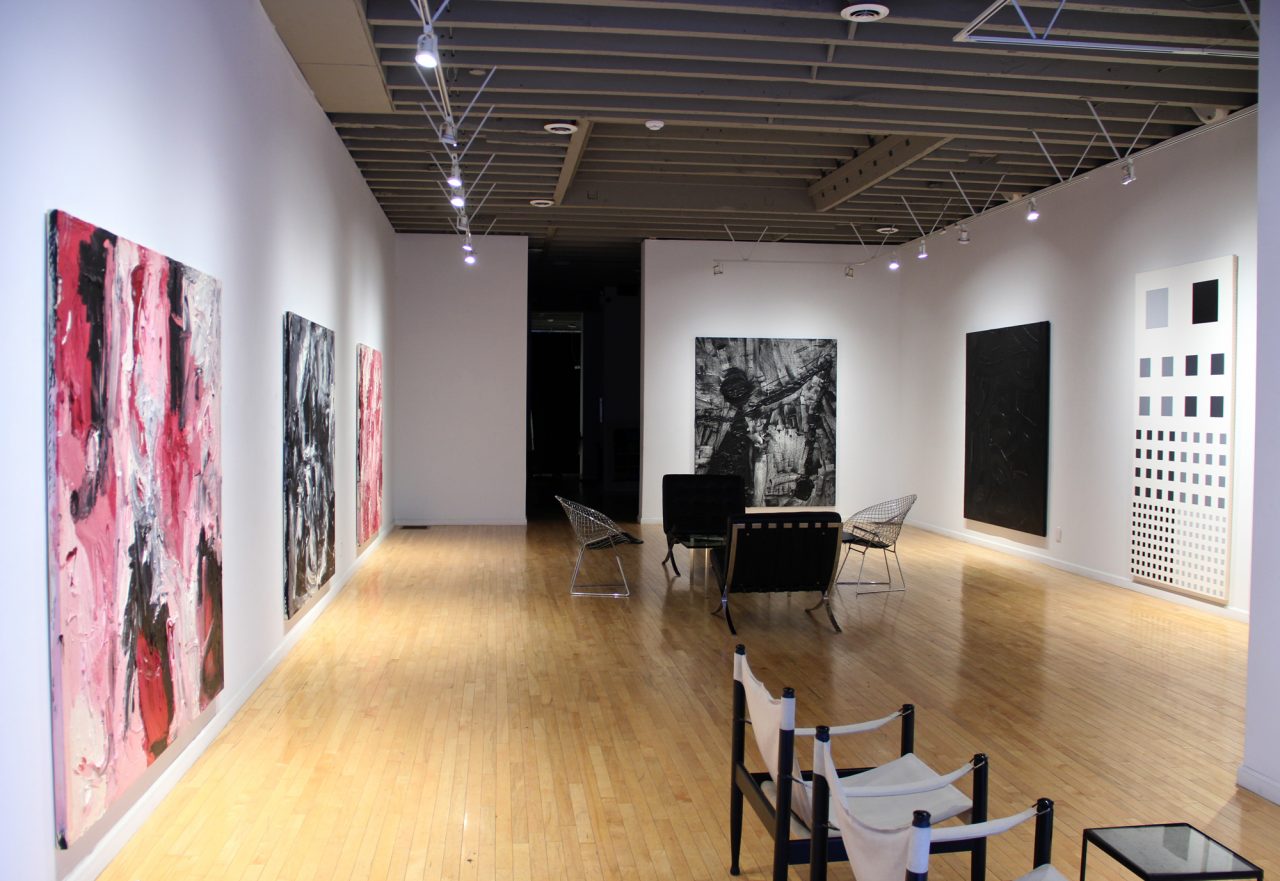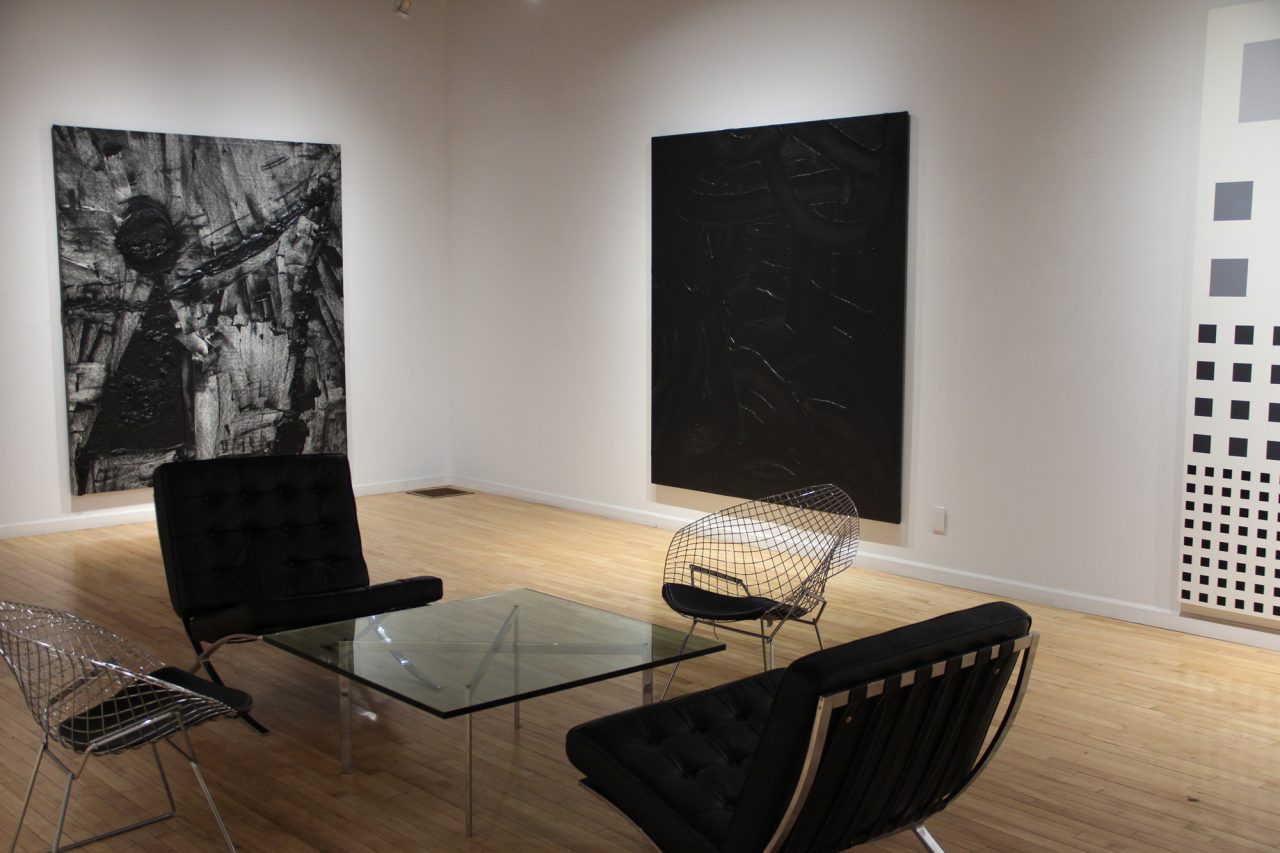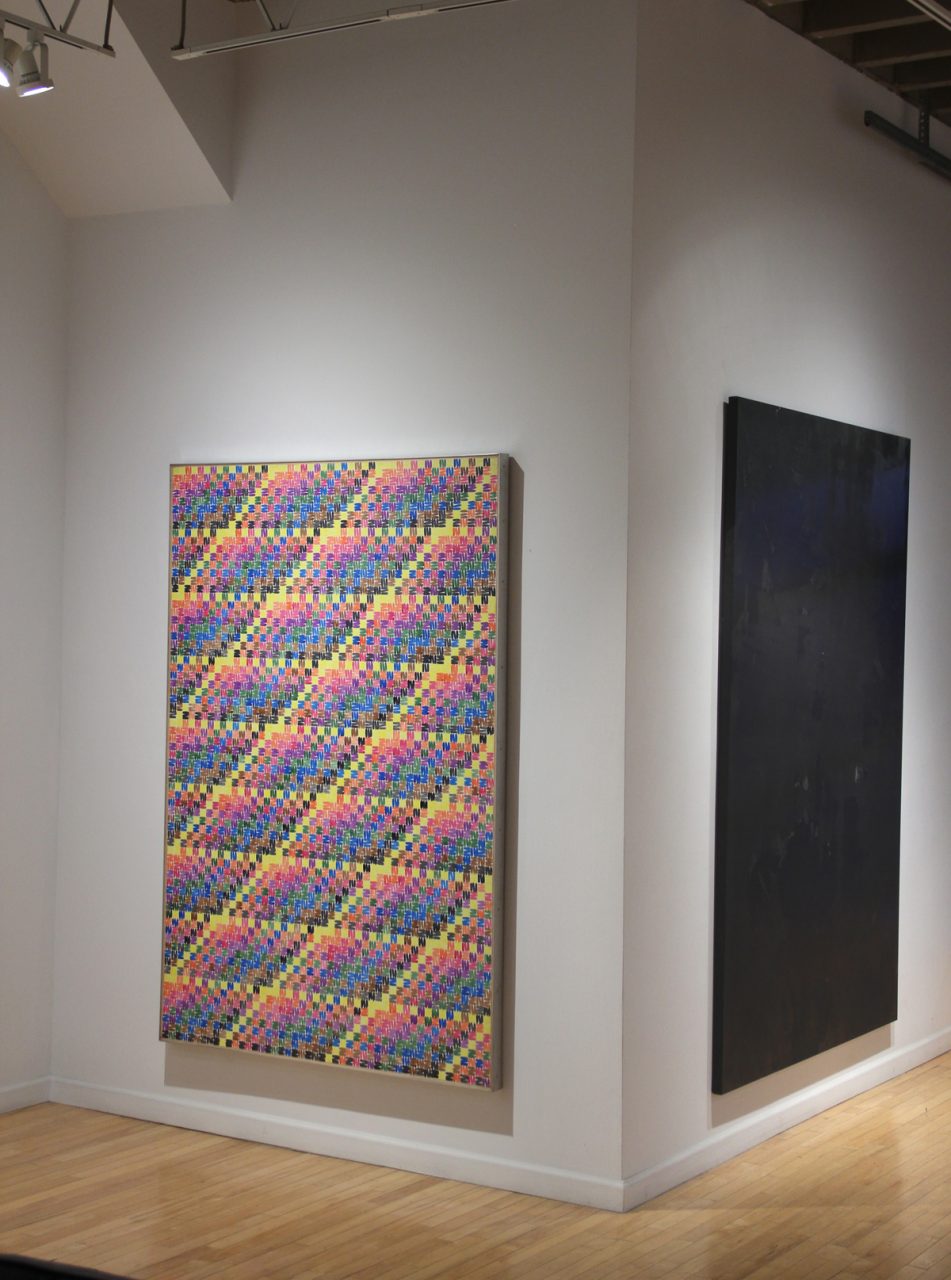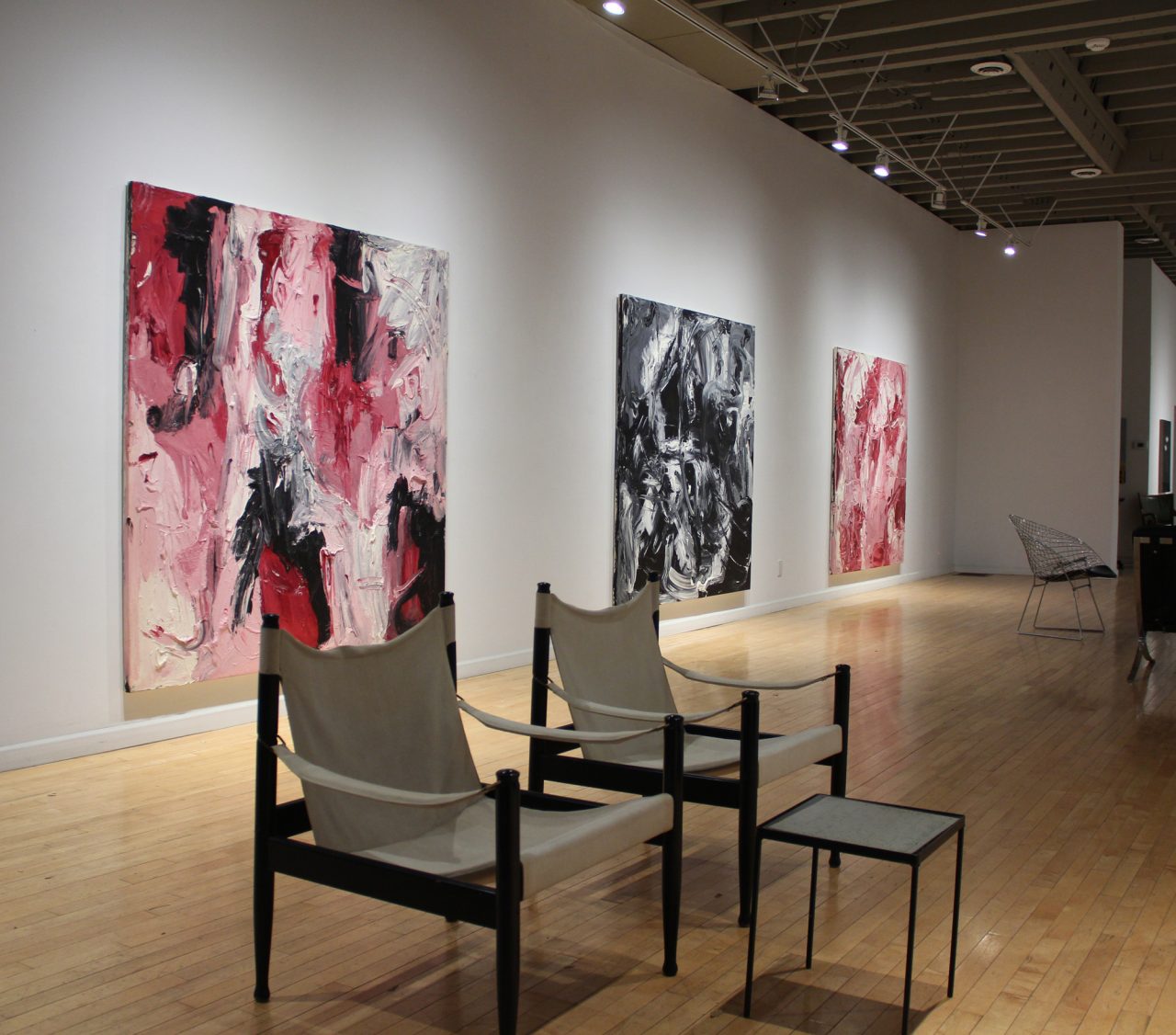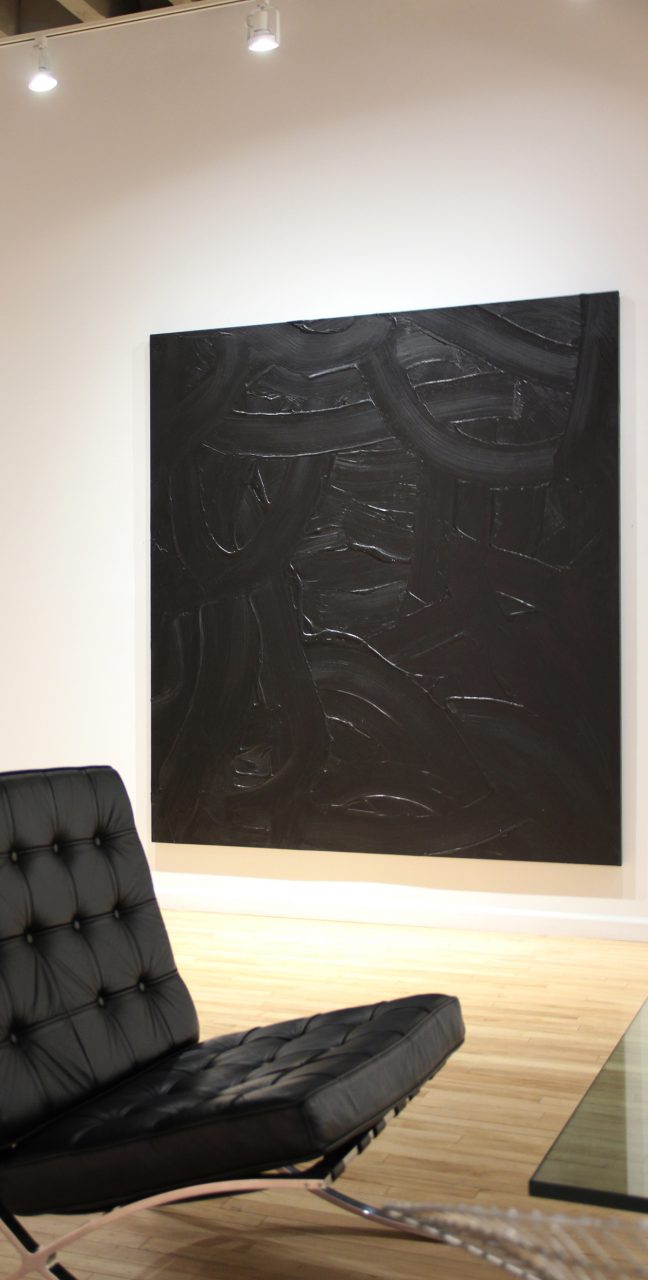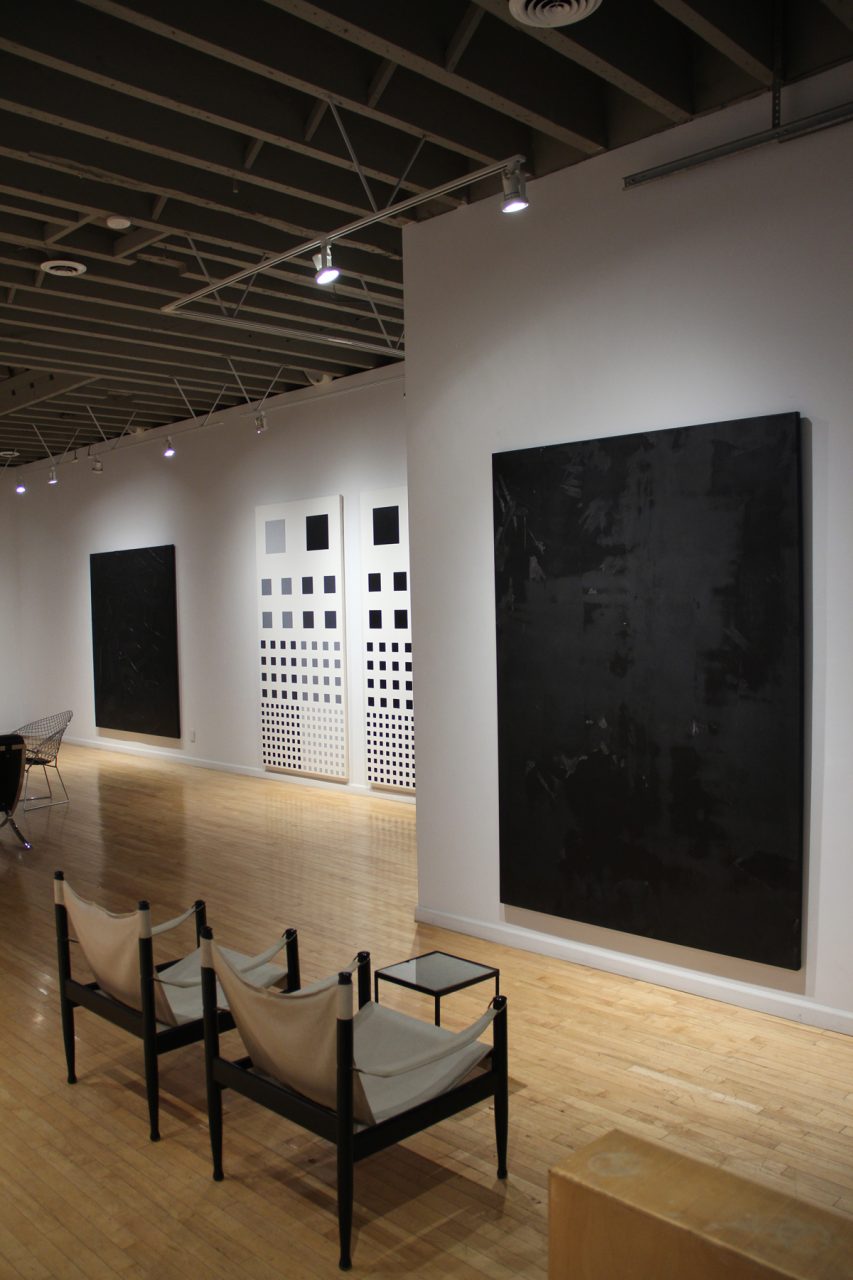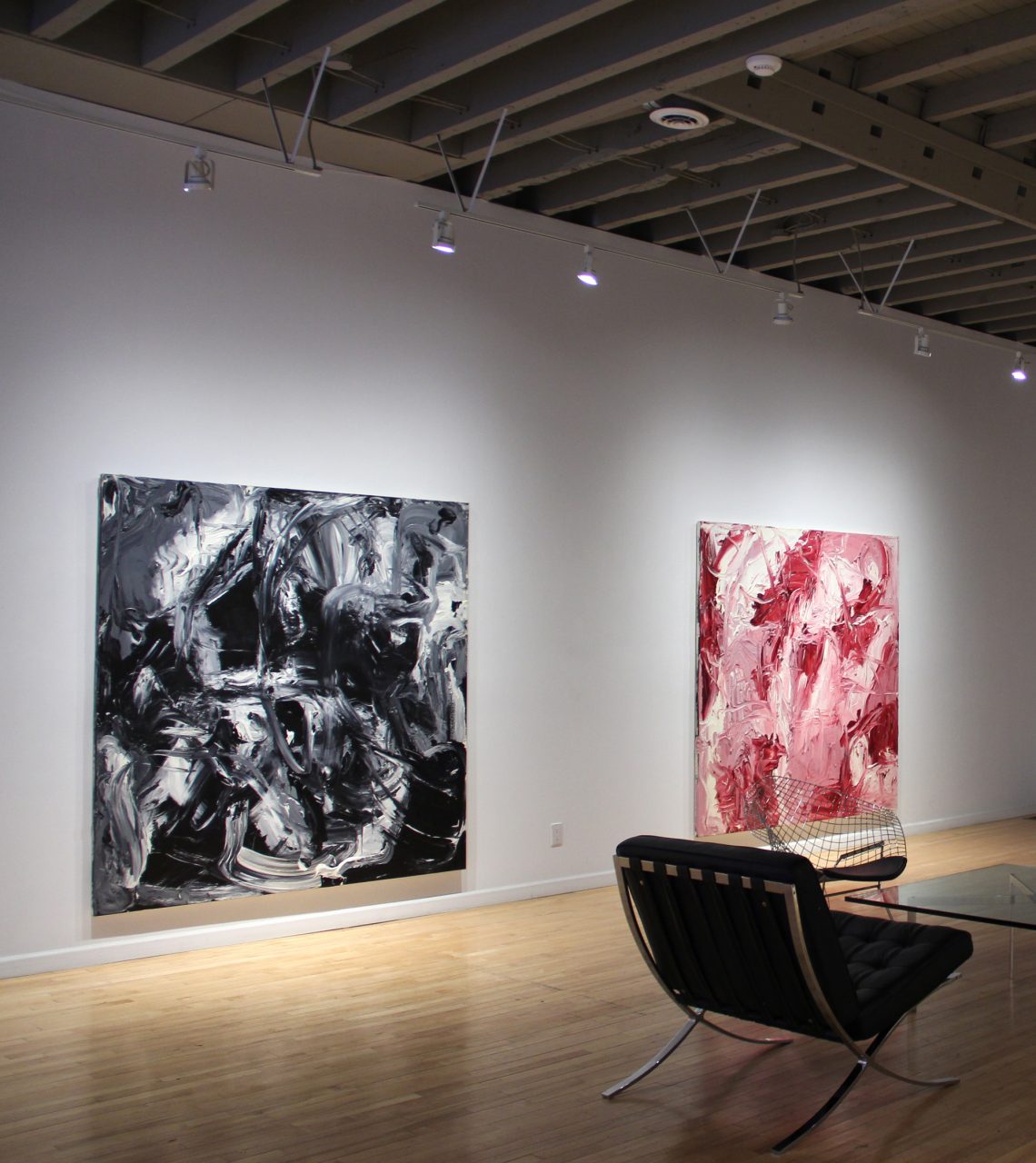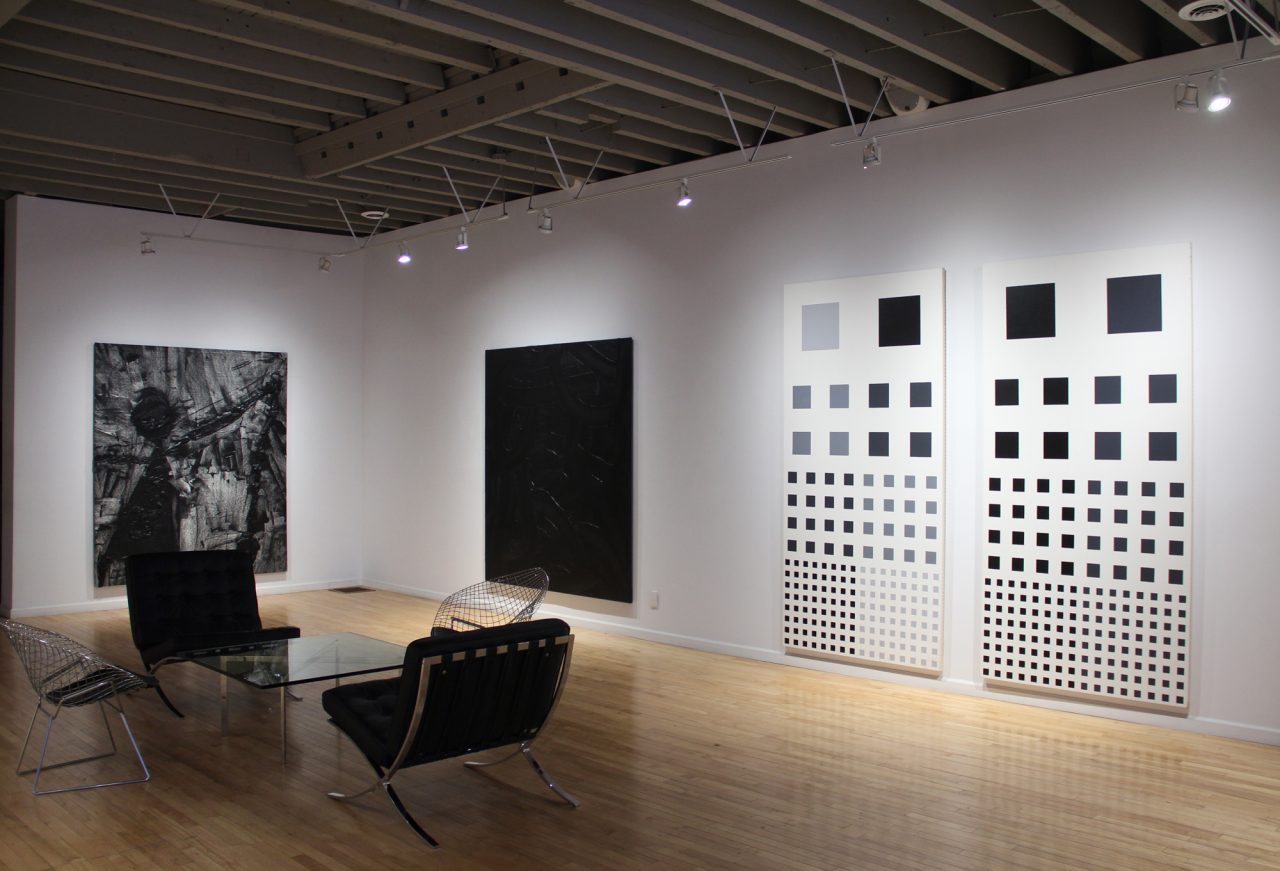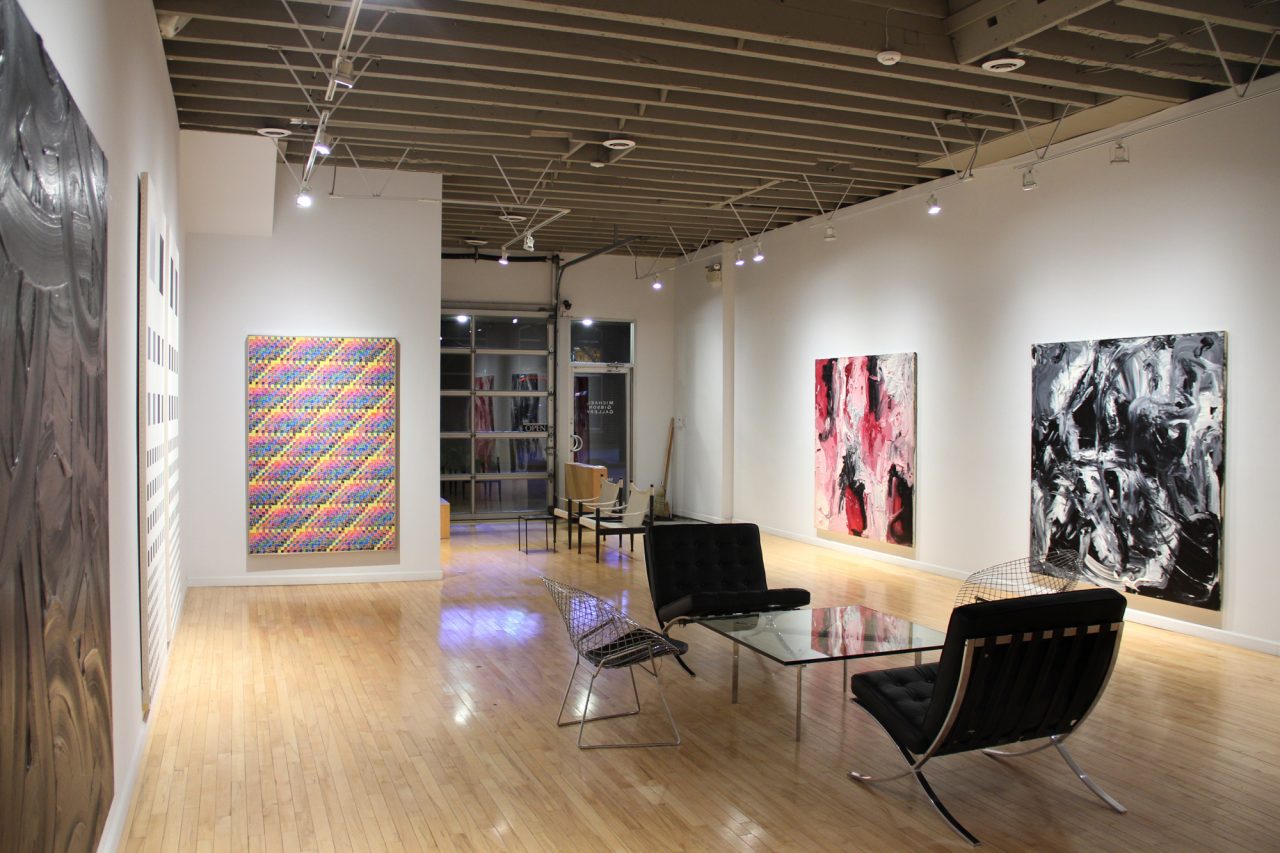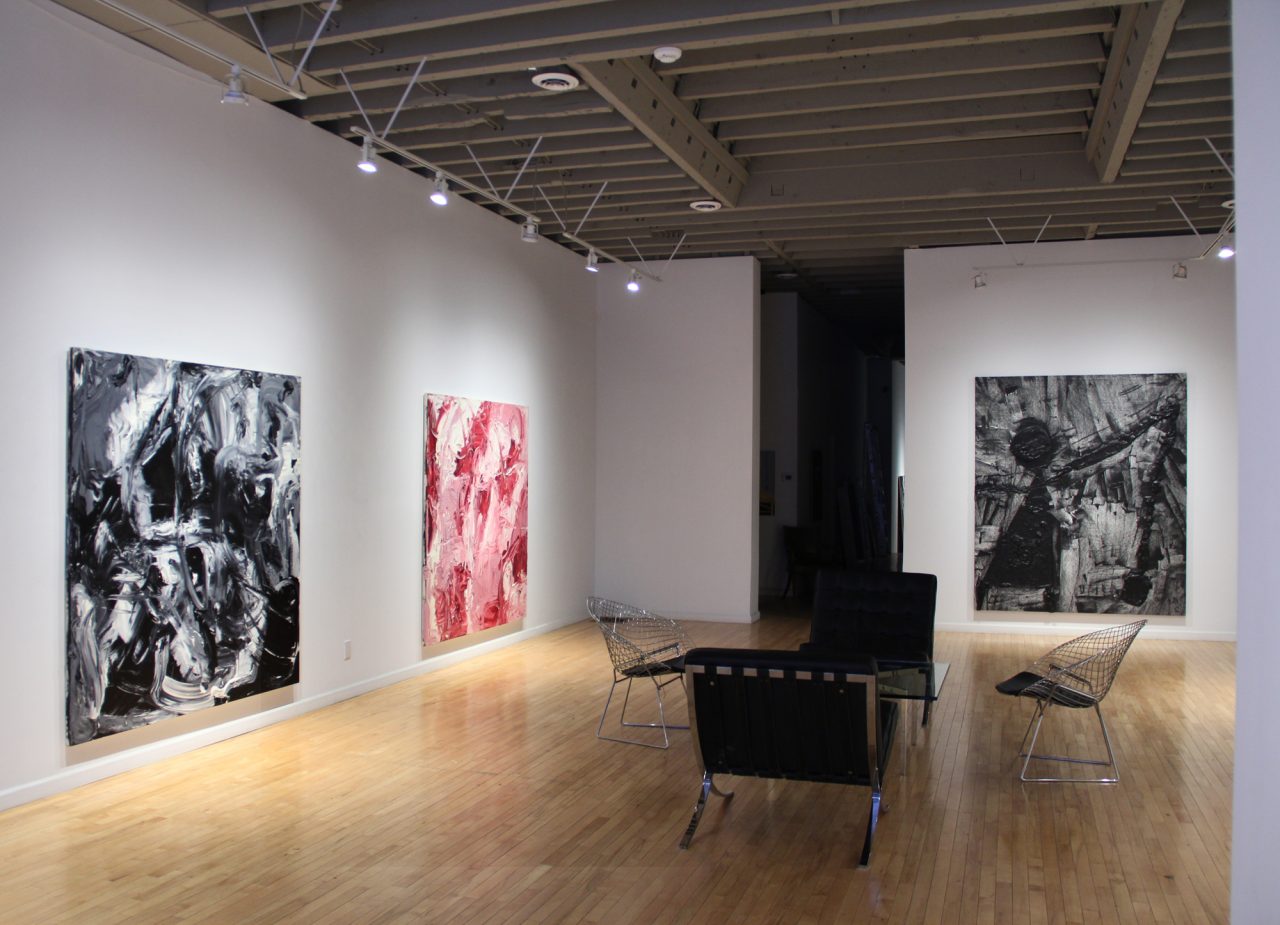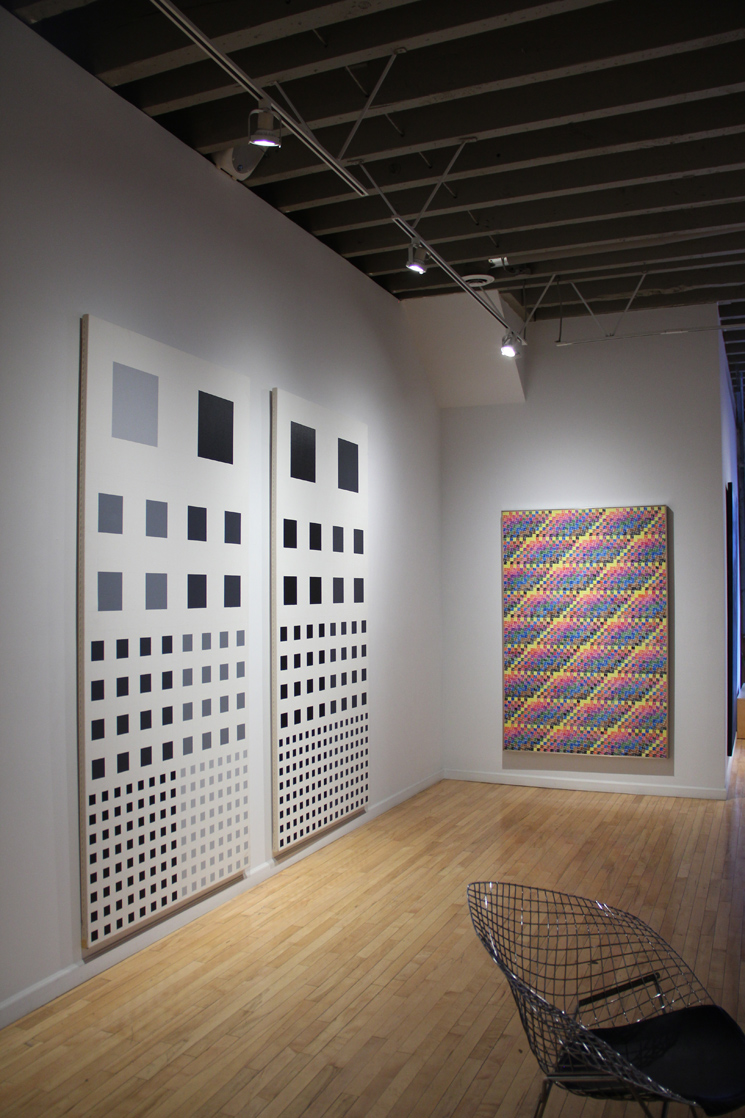Ron Martin “Back to Painting”
Ron Martin “Back to Painting” — December 1, 2017 – January 19, 2018
Our December exhibition features rare Ron Martin paintings dating between 1970 – 1987. We have chosen well known examples from Martin’s diverse body of work – from an early “World Painting”, sumptuous late 1970s “Black Paintings”, geometric works from his “2, 8, 32, 128” series and gestural work from 1987. The exhibition celebrates Martin’s conceptual, process-based approach to art making and his important contribution to Canadian art.
Click HERE to read Online Catalogue for “Back to Painting”
World Paintings (1970-1971)
One of Martin’s first series of paintings were his World Paintings, nineteen paintings, painted all a standard size.
According to Roald Nasgard’s book Abstract Painting in Canada, the World Paintings are “divided into a grid of 1-inch squares, each of which contains the basic visual unit out of which the paintings are built. Each basic unit consists of three strokes of colour in an N formation, applied upright or on its side, implying four positions in a 360-degree rotation. The strokes may be one, two or three colours selected from eight colours (the basic colours of the spectrum plus brown and black), always used in some regular sequence in each painting.
The eye finds itself roving across the surface from unit to unit, watching the play of colour with colour, of value with value, colour with structure, here reinforcing a set of relationships, there destroying it. To approach a painting or to move back from it, to move left to right, results in new perceptions of its appearance.”
The World Paintings were exhibited in 1971 at the Carmen Lamanna Gallery and at the Art Gallery of Ontario in 1976 (catalogue).
Black Paintings (1974-1981)
The World Paintings led to Martin’s One-Colour Paintings and Bright Red Paintings and finally his Black Paintings.
In 1974, Martin began painting black paintings, a colour that he focused on until 1981. Martin would constrain himself to a specific size of canvas, a specific amount of black paint (ranging from 1 gallon to 25 gallons) and a fixed amount of time to make each black painting. The paintings are gestural, material and intensely physical.
Nasgaard states “many are characterized by broad, sweeping gestures, first of the brush, later of the fingers and the hand, moving the paint across the surface of the canvas to cover it. Others are less gestural and more anonymously made. More than ever paint revelled in its identity. It was thick and gooey. The paint flowered and covered, yielded to or resisted and sometimes overruled the artist’s hand or the tool used to spread it. It glistened or pulled darkly in on itself.”
In 1978, Ron Martin represented Canada at the Venice Biennale, curated by Pierre Theberge. Eleven Black Paintings were exhibited from June-October, 1978 (catalogue). They were also featured in his Art Gallery of Ontario exhibition “Ron Martin 1971-1981” which travelled from the AGO to the VAG and NGC in 1989 (catalogue).
Geometric Paintings (1981-1985)
In the early 1980s Martin returned to geometric painting. His Geometric Paintings were devoted to the phenomena of colour mass.
The “2-8-32-128 Series” references the sequence of the hard-edged squares. Each painting has a subheading describing the specific colours that he applied to each canvas (Example: Mars Black & Four Tints of Grey). The paintings exemplify Martin’s interest in the physical application of paint and the careful selection of colour that is being applied. The paintings are consistent with Martin’s oeuvre of work and are important in his artistic development as an analytic process painter.
The Geometric Paintings were exhibited at the Mackenzie Art Gallery in 1991 (catalogue).
Gestural Paintings (1986-1987)
Martin returns to painting gestural works in 1986. Nasgaard: “Martin’s heaviest and most densely encrusted works are the Material Based paintings of the late 1980s, with one series in black, white and greys, and another in the colours made from the forty-three hues of Stevenson acrylic paints.
Some 36 to 43 litres of black and white acrylic were used for each of the first group, and 43 litres of colour for the second.
The scale is large, human-reach size, on the whole.
Ron Martin
Ron Martin was born in London, Ontario in 1943 where he set-up his first studio with Murray Favro. He was one of the original members of the Forest City Gallery and was influenced early in his career by Greg Curnoe. Ron Martin was one of a small group of painters in Canada that considered the act of creating a work a type of performance, which served to remind the viewer that their experience of a material object, such as a painting, was rooted in an experience of themselves.
Martin has had an active studio practice since 1965 with numerous solo and group exhibitions across Canada, in New York, Germany, Japan and France. He is included in a number of major exhibitions including biennials and group exhibitions at the National Gallery and the Art Gallery of Ontario.
He is the recipient of numerous awards and grants, is an independent curator, musician and writer and is represented in numerous private and public collections including the National Gallery of Canada, Art Gallery of Ontario, Vancouver Art Gallery, Montreal Museum of Fine Arts and Museum London.
